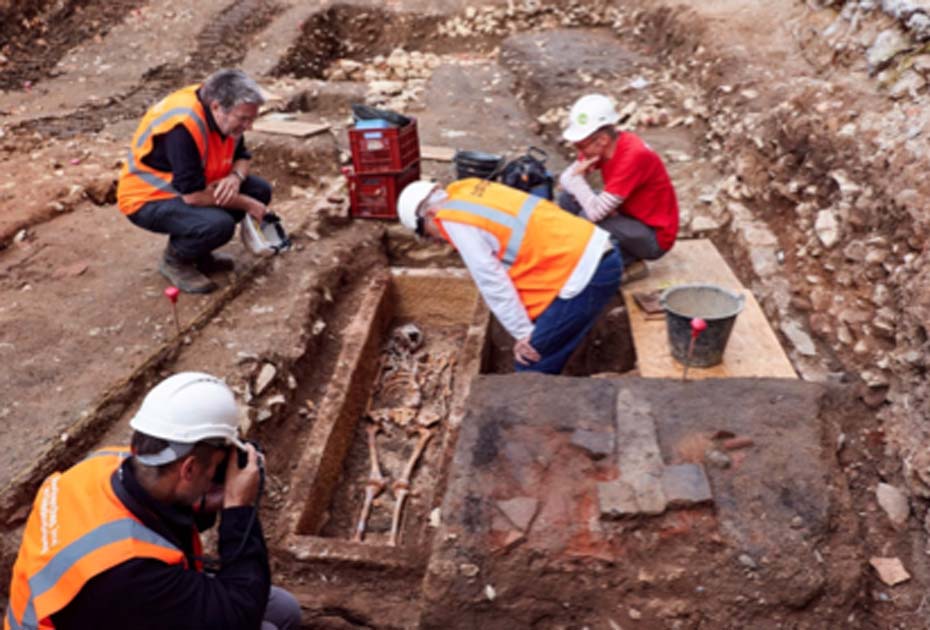Sarcophagus From the Frankish Merovingian Era Found in France
In France a very significant earlymedieval tomb has been uncovered in a chance find from a key period in the history of France, under theFranks. Construction workers came across thesarcophagus of an elderly woman from the Merovingian dynasty period. The find is expected to help researchers better understand this critical era in the history and development of France.
The sarcophagus was found this summer in the city of Cahors, which is in the southwest of France. It was discovered not far from the historic cathedral of St. Etienne.The Sun reports that “experts think it was found in an area that was once the grounds of a very large Merovingianmonastery”. It was unearthed during there-development of the district and it came as a complete surprise.
1500-year-old Frank Burial
Officials from the Département du Lot,have stated that the burial contained the remains of “an elderly female individual, testifying toosteoarthritis problems…buried without personal effects” according toThe Sun. The skeleton is complete and based on ananalysis of the bones the dead woman would have been quite old for the time.

The bones in the sarcophagus were the remains of an elderly female. (Département du Lot /Facebook)
The sarcophagus is made out oflimestone slabs that were fitted together. A preliminary examination of the find established that it dates from the 7th century AD.The Sun reports that the woman was “laid to rest in a simple limestone structure with four sides and a roof that was sealed down with mortar”. There was no marker or any other form of identification which could inform researchers of the name or origin of the women.
Despite the lack of information and grave goods the find is very significant. It has been hypothesized that the burial may come from alost passageway under the monastery. Since the discovery, shards ofpottery from the7th century have been found and possibly the remains of a kitchen. The burial comes from theMerovingian period which was 450 to 751 AD.
The First Kings of France
The Merovingian dynasty is believed to have been descended from the monarch “Merovech, of whom nothing is known except that he was the father of Childeric I” according to theEncyclopaedia Britannica. They were the ruling family of the Franks, aGermanic people who were one of the tribes that overran theWestern Roman Empire in the 5th century. They are often regarded as the first monarchs of France.

Merovingian dynasty King Merovech. (Fordmadoxfraud /CC BY-SA 3.0)
The greatest monarch of the dynasty wasClovis I. He was a great, if brutal, warrior who conquered much of modern France. Just as important, he converted toChristianity and later his people followed him. The conquests of Clovis and his conversion to Christianity were critical and often seen as laying the foundation for the kingdom of France.
TheMerovingian Franks were known as the ‘long-haired kings’ for the obvious reason - because they grew their hair long. The kingdom established byClovis I was one of the most powerful kingdoms in the earlymedieval period in Europe. They expanded into Germany but over time the Merovingian became dominated by their officials. Eventually, they were supplanted by theCarolingian dynasty, who underCharlemagne ruled most of Western Europe.
- Controversy Over Art Installation on the Stonework of one of France’s Greatest Medieval Sites
- 1,200-year-old bones found in Aachen Cathedral in Germany believed to belong to Charlemagne, King of the Franks
- Long Lost Gravestone of the ‘Real Snow White’ Emerges In Germany

Clovis I, king of all Franks. (Elekes Andor /CC BY-SA 2.0)
The Sarcophagus Gives Insight into Early France
Despite the importance of theMerovingians, there is little known about their society, customs, and the lives of the ordinary people. In the view of Dr. Bonnie Effros, a Professor of History at Florida University “graves provide us with evidence better suited to revealing intimate details about individuals and the communities to which they belonged” reportsAncient History. The simple burial of the old lady can help researchers to understand aspects of Merovingian society such as life-expectancy andfunerary customs.

Further study of the sarcophagus will help experts learn more about the Merovingian dynasty. (Département du Lot /Facebook)
The skeleton and the other finds are being investigated by researchers from the French National Institute for Preventative Archaeological Research. This body was established to protectarchaeological sites and artifacts that have been unearthed by accident or chance, such as this burial. It is believed that the artifacts found near the burial will eventually be put on display in a local museum in Cahors.
Top image: The discovery of the sarcophagus was made during redevelopment work. Source: Département du Lot /Facebook.
By Ed Whelan



















